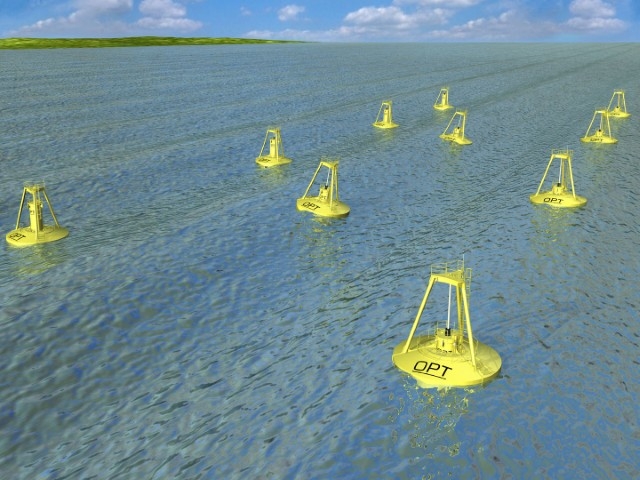With funding and technical assistance from the Department of Energy (DOE) and landmark permits issued in 2012 by the Federal Energy Regulatory Commission (FERC), four U.S. companies are moving ahead with wave and tidal energy projects, paving the way for the industry to grow.
Many coastal areas in the US have strong wave and tidal resources and could supply up to 15% of electricity by 2030, says DOE. Since waves, tides and currents have the advantage of being predictable power sources they complement solar and wind.
The first US tidal energy project began supplying power to the grid in Maine last fall.
Here’s an update on the latest marine energy developments.
Pacific Northwest
The Oregon coast is becoming a hotbed for marine energy, with the Northwest National Marine Renewable Energy Center located there. The first utility-scale, grid-connected wave energy test site is funded by a $4 million DOE grant and private investments.
And after consulting with stakeholders (particularly fisherman), the state’s Land Conservation and Development Commission approved "marine energy zones" – four areas where development will be encouraged.
Like the Department of Interior’s renewable energy zones, which set aside appropriate areas for solar and wind farms, this plan does the same for marine energy, striking the right balance between conservation and energy development.
This spring, New Jersey-based Ocean Power Technologies will deploy its first wave energy device off the coast of Oregon as part of a grid-connected, 1.5 megawatt (MW) wave power farm, making it the first wave power station permitted in the US.
The computer-equipped buoy is over 100 feet long, and generates power by bobbing up and down as waves pass by.

The first developer to test its technology there is Oregon-based Northwest Energy Innovations. Its device also floats on water, capturing energy as it surges and pitches with the waves. The company is also testing the devise at a US Navy facility in Hawaii.
Another Oregon developer, Columbia Power Technologies, has a patented design for a wave energy device that’s proving to be more efficient.
New York
NY-based Verdant Power recently finished another successful round of tests for its Roosevelt Island Tidal Energy Project.
The first turbines will be installed in 2014 and all 30 will be in the water the following year. The 1 MW project in New York City’s East River will supply power to 9,500 city residents.
Verdant uses three-bladed, horizontal-axis turbines deployed underwater to generate energy from tidal and river currents.

